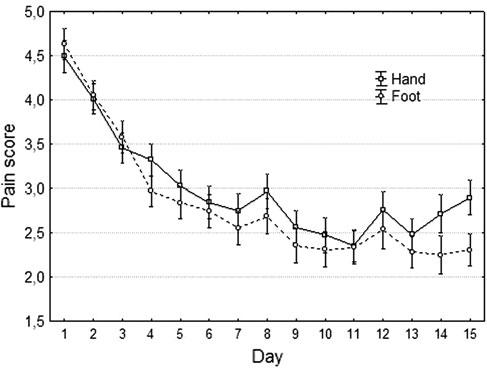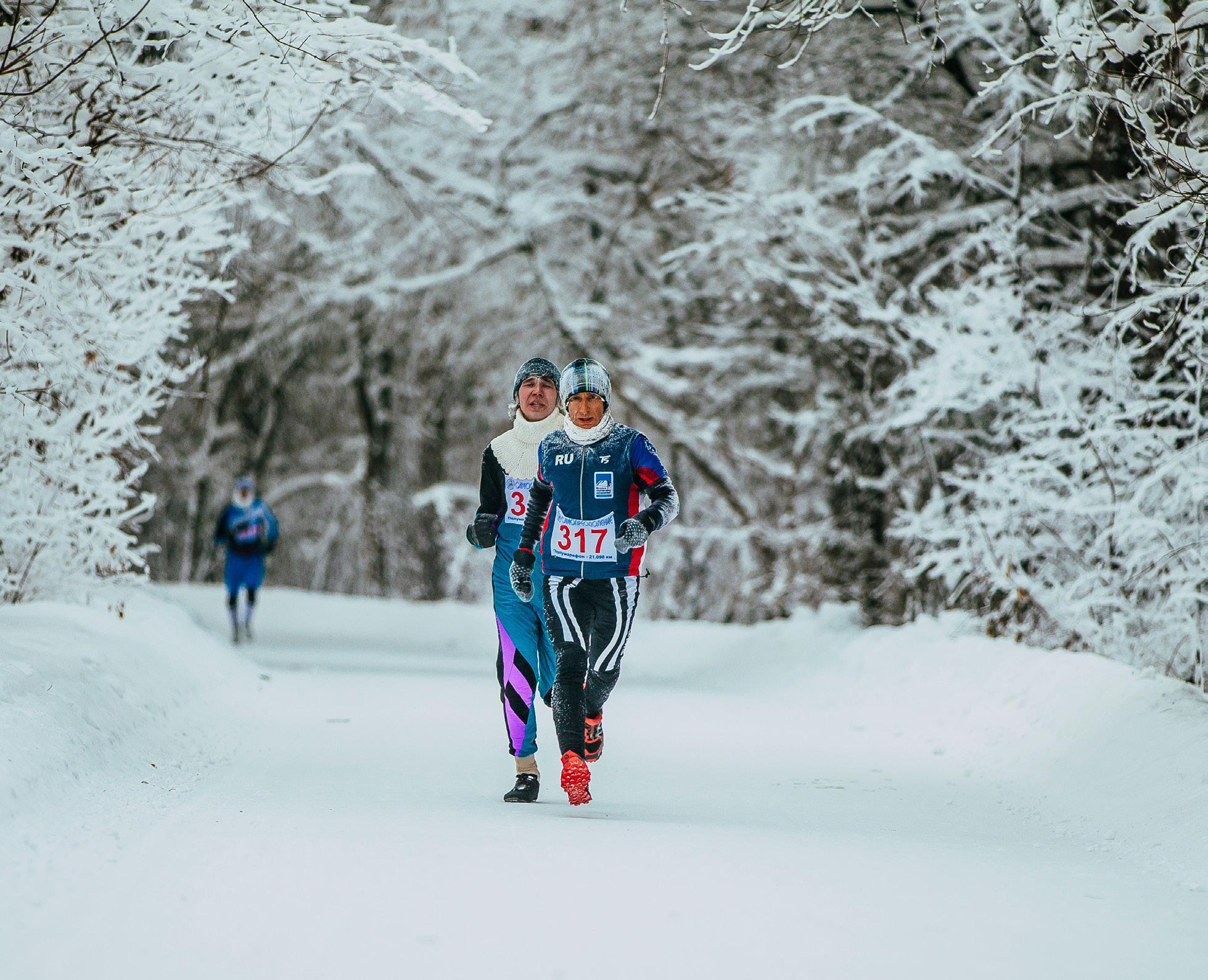
14 minute read
SKIN CARE THERAPY & ECTOIN
from I Care Issue
by NAQI Belgium
INTRODUCTION
When humans are exposed to cold, information from skin temperature sensors and blood temperature sensors in the hypothalamus activates the sympathetic nervous system, leading to skin vasoconstriction and reduced heat loss. The downside of this mechanism is that the blood flow in the fingers and toes may become so low that tissue integrity is at stake (Wilson and Goldman 1970). Fortunately, at extremity skin temperatures below about 15C a sudden periodic vasodilatation is often observed, first described by Lewis (1930). The most likely mechanism for this vasodilatation is the muscular wall of the arterio-venous anastomoses in the fingers and toes which cannot maintain vascular tone when cooled (Daanen 2003). The opening of these vessels lead to increased blood flow and, indirectly, increased local skin temperatures. Regardless of the underlying mechanisms, this cold induced vasodilatation (CIVD) response is often considered as a protective mechanism against local cold injuries (Daanen 2003; Wilson and Goldman 1970). Indeed, it has been shown that subjects with a reduced CIVD response have a higher risk of frostbite (Daanen and Van Der Struijs 2005). Therefore, it may be desirable for subjects working in the cold to have a fast CIVD response of high magnitude, leading to research into how to manipulate and possibly enhance CIVD. The idea of using repeated local cold exposure as a training stimulus for increased CIVD comes from population cross-sectional studies. These studies showed that natives of circumpolar environments (e.g., Inuits and Sami) exhibit a higher mean finger temperature compared to people who live in a more temperate climate when exposed to cold (Krog et al. 1960; Miller and Irving 1962). An enhanced CIVD reaction was also observed in fishermen compared to a control group less regularly exposed to cold (Krog et al. 1960). Nelms and Soper (1962) found that fish filleters, who are exposed to local cold only, also showed a significant earlier CIVD reaction compared to the control group. However, the possibility of self-selection for these particular occupations should not be excluded. The effects of repeated cold exposure on CIVD in field studies show ambiguous results. Some studies found a lowered mean finger temperature after a 2-week Arctic expedition, which may indicate a higher risk for cold injuries (Livingstone 1976). On the other hand, Purkayastha et al. (1992) observed higher finger temperatures in Indian soldiers after a 7-week expedition to the Arctic environment. In all reported lab studies on trainability, only either the hand or the foot was exposed to cold. Three studies were identified in which the foot was trained (Reynolds et al. 2007; Savourey 1996; Yoshimura 1960). The study of Reynolds et al. (2007) observed no differences, the other two studies observed higher mean foot temperatures after repeated immersion. For hand immersion, most studies showed no training effect (Eagen 1966; Geurts et al. 2006a; Glaser and Whittow 1957; O’Brien 2005), three studies showed a negative training effect (Daanen et al. 2007; Geurts et al. 2005a;Mekjavic et al. 2008) and only two studies showed positive effects (Adams and Smith 1962; Geurts et al. 2006b). In summary, it seems that training of the foot is more successful than training of the hands or fingers. CIVD of the fingers is generally much more pronounced than CIVDof the toes (Cheung andMekjavic 2007; Van Der Struijs et al. 2008) and there may be more scope for trainability in the toes than in the fingers. Therefore, a study was performed in which the CIVD trainability was investigated for fingers and toes. This was done by tracking thermal responses of the fingers and toes over 15 days of repeated local immersion in 8C water. In line with the general picture from the existing literature, we hypothesized that toe CIVD would show more improvement than finger CIVD following repeated immersions.
METHODS
SUBJECTS: Eighteen students volunteered for participation in this study. During the first day, two subjects indicated that they could not tolerate the cold water during immersion of the hands and feet and were withdrawn. The remaining 16 subjects, nine males and seven females, participated until the end. The subjects had a mean (SD) age of 20.4 (2.2) years, mean (SD) height of 177.7 (1.1) cm, and mean (SD) body mass of 71.5 (12.4) kg. One subject was left-handed, 15 were right-handed and all were non-smokers. The subjects followed a protocol approved by the Human Ethics Committee of the TNO. All subjects were informed about the potential risks and discomforts of the study and gave their written informed consent to participate. All subjects were medically screened for cardiovascular diseases and Raynauds syndrome.
PROTOCOL: After entering the room (ambient temperature 20–24C, relative humidity 30–70%), the subject sat down on a chair. The subjects wore shoes, socks, trousers or shorts and a shirt (one single layer of clothing). For the first 10 min, the subjects rested while the measurement equipment was attached to the body by the researcher. Thermistors at the fingers were taped just lateral of the nail bed, since the reproducibility of skin temperature is better in the nail bed (O’Brien 2005). The thermistors for the toes were taped at the ‘toe pad’ since Reynolds et al. (2007) found a highly variable CIVD response at the nailbed of the toes. Therefore we chose for the toe pad, which is the common position in most previous research, so that comparison to previous studies is enabled (e.g. Van Der Struijs et al. 2008). Five minutes prior to immersion of the hand and foot in cold water, the subjects immersed their hand and foot in water of 34–36C to create similar starting conditions for every subject. The hand was positioned at the level of the heart, while the foot was placed in a water tank located on the floor. The hand as well as the foot made no contact with the bottom of the water tanks, because of a water-permeable mesh (3mesh, Muller Textil GmbH, Wiehl, Germany) that was lying at the bottom of the water tanks.
After 5 min in warm water the subject put the right hand (up to the ulnar and radial styloids) and foot (up to the malleolus) for 30 min into cold stirred tap water of 8C. The immersion baths were placed next to the warm water baths. The hand and the foot were immersed simultaneously. Every 5 min, starting at minute five, tactile sensitivity of the tip of the index finger was tested with Semmes–Weinstein monofilaments. Directly after the Semmes–Weinstein test, the subjects used the nonimmersed hand to fill in a pain score for their hand as well as foot. After 30 min of cold immersion, the hand and foot were taken out of the water tanks and patted dry with a towel. The temperature measurements ended 5 min later. This protocol was repeated over 15 days, 5 days per week. Day 1 was the pre-test and day 15 the post-test session. There were 2 days between the pre-test and the second immersion. Between day 14 and the post-test, the subjects had one day off. The left, non-acclimatized hand and foot were immersed at day 1 (pre-test) and 15 (post-test) as well, before or after (counterbalanced) the immersion of the right hand and foot. MATERIALS: The hand immersion bath had a dimension of 49.5 (l) 9 29 (w) 9 13 (h) cm, and the foot water bath had a dimension of 46 (l) 9 36 (w) 9 22.5 (h) cm. To minimize the heat loss or heat gain of the water in the baths, they were insulated with polystyrene. The temperature was controlled within 1C using a thermostat bath (TLC 15, PM Tamson Instruments, Bleiswijk, The Netherlands). Finger and toe temperatures were continuously monitored using thermistors (type P-8432, ICBT, Tokyo, Japan) attached to the skin by one layer of Leukoplast tape (BSN medical & GmbH & Co.KG, D-22771, Hamburg, Germany) and connected to a Mobi8 data acquisition system (TMS International BV, Oldenzaal, The Netherlands). The temperature of the fingers and toes was sampled every second. The lowest value over the 30 min immersion interval was defined as the minimum temperature (Tmin). The mean (Tmean) and maximum (Tmax) temperatures were calculated over the 5- to 30-min interval. CIVD reactions were defined as a continuous rise of at least 1C. To exclude minor fluctuations, we averaged the values over a period 20 s before and 20 s after the measurement for all temperatures. When the rise was<1C, the response was counted as ‘No CIVD’, when it was 1C or more it was counted as a CIVD response. The onset time is the time in seconds from start of the immersion until the start of a continuous increase of temperature of at least 1C. Tpeak is the temperature at the peak of the first CIVD wave. The CIVD analysis was completely automated to exclude human subjectivity. Pain was assessed every 5 min using a 0–10 visual analog scale (VAS) Numeric Pain Distress scale. Tactile sensitivity at the tip of the index finger was assessed using Semmes–Weinstein monofilaments (Bell-Krotoski and Tomancik 1987). The subjects turned the hand under water every 5 min for about 10 s to enable determination of tactile sensitivity. STATISTICAL ANALYSIS: Since most studies have limited statistical power, we included 16 subjects in the study. Based on finger pad temperatures in the study of O’Brien (2005), differences in onset time of 25 s and differences in peak temperature of 1.5C can be detected. We measured all fingers and toes because prevalence of a CIVD in a single finger or toe shows considerable variability (Cheung and Mekjavic 2007; Mekjavic et al. 2008; Reynolds et al. 2007). Statistical analyses were performed using Statistica (Statsoft 2008). Data for skin temperature, pain and tactile sensitivity were compared using a two-way (condition 9 time) factorial analysis of variance (ANOVA), with finger and toe temperatures statistically treated as independent. CIVD parameters between pre- and post-test were identified using a paired t test. Differences in the number of CIVD reactions between pre- and post-test were analyzed non-parametrically. The results are expressed as means (SD), and significance was accepted as p<0.05.
RESULTS
The finger and toe skin temperatures averaged over all fingers and toes during the days of immersion are shown in Fig. 1. Finger skin temperature essentially remains constant; toe skin temperature shows an increase. During the last 2 days a drop in toe and finger skin temperature was noticed. Cold induced vasodilation parameters of the pre- and post-test are shown in Table 1. Due to technical problems with the attachment of the sensors to the skin, there were several drop-outs randomly divided over the subjects during the first day. While the untrained extremities did not change in temperature after 15 days of immersion, the trained extremities did change. The number of CIVD reactions with at least one wave dropped significantly in trained fingers after 15 days of cold water immersion from 52 to 24% (p<0.01) while it remained unchanged in the untrained fingers (39 vs. 46%). The onset times of CIVD were widely spread and did not display significant differences; neither did the peak of the CIVD wave. While the trained fingers showed a significant decrease in temperature (for Tmean, Tmin and Tmax, p<0.001) during the posttest, the trained toes showed an increase in temperature during the post-test (Tmean and Tmin, p<0.05; Tmax, p<0.01,). Finger skin temperatures were significantly lower for the thumb (p<0.05), index finger (p<0.05), middle finger (p<0.05), ring finger (p<0.01) and little finger (p<0.001) during day 15 as compared to day 1. Toe temperatures were higher for the middle (p<0.05), fourth (p<0.01) and little toe (p<0.05) and not significantly different between day 1 and day 15 for the big toe and the index toe.

Figure 1: Finger and toe skin temperatures (C) averaged over minutes 5–30 and over all digits during immersion in 8C water for 15 consecutive days. Vertical bars denote the standard error of the mean.
2598 EurJApplPhysiol(2012)112:2595–2601
Table1 Comparisonbetweenpre-andpost-testforCIVDparameters
Pre-test Post-test
Fingers Toes Fingers Toes
Trained Untrained Trained Untrained Trained Untrained Trained Untrained
N 73 64 63 68 79 80 79 79 #CIVD 38 = 52% 25 = 39% 28 = 44% 30 = 44% 19 = 24%D 37 = 46% 23 = 29% 30 = 38% Onsettime(s) 676(462) 629(456) 766(292) 763(349) 716(407) 629(471) 735(338) 741(419) Tpeak ( C) 10.54(0.69) 11.88(2.07) 11.17(0.99) 12.64(1.81) 10.27(0.79) 11.48(1.90) 11.85(2.05) 12.60(2.35) Tmean ( C) 9.28(0.54) 9.41(1.03) 9.49(0.89) 9.73(1.04) 8.91(0.44)* 9.55(1.10) 10.03(1.38) 9.96(1.23) Tmin ( C) 8.69(0.32) 8.69(0.41) 8.81(0.72) 8.88(0.70) 8.48(0.24)* 8.72(0.45) 9.15(0.89) 8.97(0.78) Tmax ( C) 10.21(0.91) 10.49(1.89) 10.85(1.23) 11.54(1.76) 9.63(0.86)* 10.72(2.13) 11.68(2.16)D 11.92(2.23)
N isthenumberofexperimentaldatasets.Themaximumis16subjects 9 5toes/fingers = 80.Mainlyinthepre-test,severalmeasurementshad tobedisregardedsincethesensorsbecamedetachedfromtheskin.#CIVDreactionsstandforthenumberofexperimentaldatasetswithatleast oneCIVDreaction.Valuesaremean(SD) *Significantlydifferentfrompre-testvalues(p \ 0.001) D Significantlydifferentfrompre-testvalues(p \ 0.01) Significantlydifferentfrompre-testvalues(p \ 0.05)
werewidelyspreadanddidnotdisplaysignificantdifferences;neitherdidthepeakoftheCIVDwave.Whilethe trainedfingersshowedasignificantdecreaseintemperature(for Tmean, Tmin and Tmax, p \ 0.001)duringtheposttest,thetrainedtoesshowedanincreaseintemperature during the post-test (Tmean and Tmin, p \ 0.05; Tmax, p \ I CARE ISSUE - ISSUE 3 - 20160.01,). Finger skin temperatures were significantly lowerforthethumb(p \ 0.05),indexfinger(p \ 0.05), middlefinger(p \ 0.05),ringfinger(p \ 0.01)andlittle finger(p \ 0.001)duringday15ascomparedtoday1.Toe temperatureswerehigherforthemiddle(p \ 0.05),fourth
Pain in the trained hand and foot decreased over time, as can be clearly seen in Fig. 2. This graph displays the average pain experienced during cold water immersion each of the 15 days. Pain in the hand dropped from 4.5 (1.8) at day 1 to 2.9 (1.9) at day 15 (p‹0.001). Pain in the foot dropped from 4.6 (1.7) to 2.3 (1.8) (p‹0.001). After day 4, there was no further significant drop in pain. Pain was significantly less during post-test compared to the pre-test (Table 2). This is true for hand as well as foot and trained side as well as the untrained side. Because the scores of the trained and untrained hand at day 1 were equal (no significant change between these scores), the comparison between the scores at day 15 show significantly less pain in the trained hand, compared to the untrained hand at day 15. The same is true for foot, but a note has to be made here, because pain in the trained foot at day 1 was already significantly lower compared to the pain in the untrained foot (p‹0.05). Tactile sensitivity of the index finger did not change significantly over 15 days, but was related to the skin temperature of the index finger. Figure 3 shows the relationship between index finger skin temperature and tactile sensitivity. For a mean (SD) skin temperature of 8.78C (0.35) only a thick filament (4.08 g) could be detected, whereas for an index finger skin temperature of 10.35C (1.83) even thin filaments of 2.44 g could be detected.
DISCUSSION

The main objective of this study was to investigate the effect of repeated local cold exposure on thermal responses in both the fingers and toes. Furthermore, we looked at the influence of local cold acclimation to pain and tactile sensitivity. Fifteen days of immersing the right hand and foot simultaneously in cold water for 30 min produced somewhat contradictory responses in the fingers versus the toes. Namely, the incidences of CIVD in toes pre- and postacclimation were not different, from 44% of the possible events pre-acclimation to 29% post-acclimation. However, the Tmean, Tmin, and Tmax increased post-acclimation, especially in the third, fourth, and fifth toes; although significant, the magnitude of the changes in our study is small, at<1C on average. Our data, combined with the positive training effect for toes observed by Yoshimura (1960) and Savourey (1996), seem to suggest that toe blood flow is trainable, albeit modestly. To date, only Reynolds et al. (2007) observed no changes in a similar study. In contrast, the fingers proved unresponsive to repeated cold exposures, and indeed the thermal response may have degraded. The number of CIVD reactions in the fingers dropped significantly from 54 to 24%, post-acclimation, as did the finger skin temperature parameters. Less subjects showed CIVD post-acclimation and the subjects that still had CIVD showed it to a lesser extent. Results in the literature are conflicting, but the majority of studies observe no effect or a detrimental effect of repeated cold exposure to finger skin temperature. The decrease of CIVD reactions and temperature in fingers are in line with previous findings by Mekjavic et al. (2008), who found similar results of these parameters after

Figure 2: Average pain score and standard error of the mean of the trained hand and foot during immersion over 15 days. Note that at day 1 and 15 the immersion sequence of the extremities was counterbalanced
EurJApplPhysiol(2012)112:2595–2601
Table2 Pre-(day1)andpost-test(day15)painscores(SD)
Pain Day1 Day15
Trainedhand Untrainedhand Trainedfoot Untrainedfoot 4.5(1.8) 4.8(1.8) 4.6(1.7) 5.1(1.7)
*Significantlydifferentfromday1values(p \ 0.001) 2.9(1.9)* 3.9(2.2)* 2.3(1.8)* 4.2(2.1)*
Fig.3 Relationbetweenindexfingerskintemperatureandtactile sensitivity. Tactile sensitivity is expressed as the weight of the Semmes–Weinstein filament. Data for this figure included all measurements over the 15days of temperature and sensitivity (trainedaswellasuntrainedindexfinger). Verticalbars denotethe standarderrorofthemean
showedCIVDpost-acclimationandthesubjectsthatstill hadCIVDshowedittoalesserextent.Resultsintheliteratureareconflicting,butthemajorityofstudiesobserve noeffectoradetrimentaleffectofrepeatedcoldexposure tofingerskintemperature.ThedecreaseofCIVDreactions andtemperatureinfingersareinlinewithpreviousfindings byMekjavicetal.( theseparametersafter13daysofrighthandimmersionin waterof8 Cfor30minandGeurtsetal. reportedadropofmeanfingerskintemperatureafter investigatingtheCIVDresponsewithtensubjectsinsimilarconditionsasusedinourstudy.Moststudiesobserved noeffects(Eagen Whittow 1957 observedpositiveeffects(AdamsandSmith etal. 2006b fingersmaybeelevatedinindividualsacclimatedtocold. Thisisfurthersupportedbyadecreaseinpainsensations withbothhandandfeetcoolingafteracclimation. Thedecreaseinfingerskintemperatureduetotraining wasmainlyobservedduringthelast2days.Thisdropin fingerandtoetemperatureduringthelast2days(Fig. mayberelatedtotheambienttemperatureoutsideofthe buildingthatwasabout16 18–22 Cintheprecedingdays(meteorologicaldatafrom Schipholairportthatisinclosevicinitytothemeasurement location).Thelowerambienttemperaturemayhavecaused areductioninthethermalstateofthebodypriortothe experiment. Controlling the temperature of the experimentalroomandimmersingtheextremitiesinwarmwater (35 C)for5minpriortothecoldwaterimmersionwiththe Figure 3: Relation between index finger skin temperature and tactile intentiontocreateastablethermalconditionforthesubsensitivity. Tactile sensitivity is expressed as the weight of the Semmes–inboththefingersandtoes.Furthermore,welookedatthe jectsmayhavebeeninsufficienttoeliminatetheeffectof Weinstein filament. Data for this figure included all measurements over the influenceoflocalcoldacclimationtopainandtactile theexternalambienttemperatureonthethermalstatusof sensitivity.Fifteendaysofimmersingtherighthandand thebody.Ontheotherhand,itmaysimplybethatthe 15 days of temperature and sensitivity (trained as well as untrained index footsimultaneouslyincoldwaterfor30minproduced changesduringthelast2daysreflectrealchangesdueto finger). Vertical bars denote the standard error of the mean. somewhatcontradictoryresponsesinthefingersversusthe coldtrainingthatmayonlytakeeffectfollowingprolonged toes.Namely,theincidencesofCIVDintoespre-andpost- and repeated exposures. The ambient temperature was acclimationwerenotdifferent,from44%ofthepossible identicalatday1andday15(16 eventspre-acclimationto29%post-acclimation.However, comparisoncanbemadebetweenthepre-andpost-test. the Tmean, Tmin, and Tmax increased post-acclimation, Thedecreaseinfingerskintemperatureandincreasein especiallyinthethird,fourth,andfifthtoes;although toeskintemperatureduringtheCIVDtrainingperiodof significant,themagnitudeofthechangesinourstudyis 15daysmaybepartlyattributedtoanatomicaldifferences. small,at \1 Conaverage.Ourdata,combinedwiththe Thefeethaveasmallersurfaceareatovolumeratiothan positivetrainingeffectfortoesobservedbyYoshimura thehands(68vs.104m (1960)andSavourey(1996),seemtosuggestthattoeblood whichleadstoslowercoolingofthefeetascomparedto flowistrainable,albeitmodestly.Todate,onlyReynolds thehands.ThismaybethereasonthatCIVDislessproetal.(2007)observednochangesinasimilarstudy. nouncedinthefeetthaninthehands(VanDerStruijsetal. Incontrast,thefingersprovedunresponsivetorepeated 2008).Therefore,itmaybemoreeffectivetoenhance coldexposures,andindeedthethermalresponsemayhave vasoconstrictorytoneandthesensitivityoflocalblood







